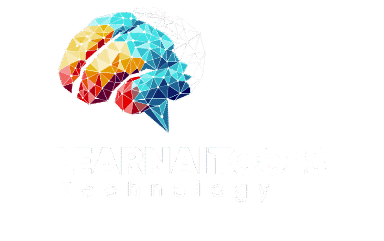
AI Finance Innovation 2025: The Next Frontier of Financial Transformation
AI Finance Innovation 2025 marks a revolutionary shift in how the global financial industry operates. It merges artificial intelligence (AI) with finance to create faster, safer, and more intelligent systems. In this 1200-word article, we’ll explore how AI is reshaping financial processes, customer experience, investments, and compliance while maintaining a balance between innovation and ethics.
Introduction: AI Finance Innovation 2025 and the New Era of Finance
AI Finance Innovation 2025 represents more than just technological change—it symbolizes a complete transformation in financial ecosystems. With AI’s rapid integration into banking, investments, and risk management, the financial world is moving toward an era defined by precision, automation, and intelligence.
Through AI Finance Innovation 2025, organizations are embracing predictive insights, data-driven decision-making, and hyper-personalized services that redefine customer expectations.

Key Trends Driving AI Finance Innovation 2025
1. Automation and Process Optimization
AI Finance Innovation 2025 emphasizes automation as the backbone of financial operations. Tasks such as transaction processing, reconciliation, and report generation are now managed by AI-powered systems, reducing errors and increasing efficiency. Robotic Process Automation (RPA) combined with machine learning allows institutions to cut costs while boosting accuracy.
2. Fraud Detection and Risk Management
One of the most significant benefits of AI Finance Innovation 2025 is enhanced fraud prevention. AI models analyze millions of transactions in real time, detecting unusual patterns and preventing cyber threats before they escalate. Advanced anomaly detection and behavioral analytics are reshaping how financial security is maintained.
3. Personalized Financial Experiences
AI Finance Innovation 2025 has empowered institutions to provide customer-centric services. Chatbots and digital assistants offer personalized investment advice, spending insights, and loan recommendations. This innovation bridges the gap between financial institutions and their customers through intelligent engagement.
4. Smarter Investment and Portfolio Management
In AI Finance Innovation 2025, AI-based analytics tools are transforming investment strategies. Predictive algorithms can assess market trends, identify high-potential opportunities, and help investors diversify portfolios with better accuracy. This evolution makes financial decisions more data-driven than ever before.
5. Regulatory Compliance and RegTech Integration
Compliance is critical in the finance sector. With AI Finance Innovation 2025, companies now use AI to automate audits, monitor transactions for regulatory adherence, and ensure transparency in reporting. AI-driven RegTech solutions simplify compliance while reducing human intervention and errors.
6. Data Intelligence and Integration
Data remains the foundation of AI Finance Innovation 2025. Financial firms are creating unified data platforms to enhance predictive analysis and improve decision-making. These AI-powered data systems enable real-time insights, helping organizations stay competitive in an ever-changing market.

Challenges and Risks in AI Finance Innovation 2025
While AI Finance Innovation 2025 offers immense opportunities, it also brings complex challenges that demand attention.
1. Transparency and Explainability
AI systems often operate as “black boxes,” producing results without revealing the logic behind them. This lack of explainability raises concerns for regulators and customers who require clear reasoning behind financial decisions.
2. Algorithmic Bias
If AI models are trained on biased or incomplete data, they may unintentionally discriminate based on income, gender, or location. AI Finance Innovation 2025 must prioritize fairness and data diversity to ensure ethical outcomes.
3. Cybersecurity Risks
AI systems handle sensitive financial data, making them prime targets for cyberattacks. Protecting infrastructure, encrypting data, and continuously monitoring for threats are vital components of a secure AI ecosystem.
4. Legal and Regulatory Barriers
Different countries have varying regulations regarding AI use in finance. Navigating these evolving frameworks is crucial to the sustainable growth of AI Finance Innovation 2025.
5. Infrastructure and Implementation Costs
Implementing large-scale AI systems requires powerful computational resources and trained professionals. The initial setup cost can be high, but long-term benefits such as reduced fraud and improved efficiency outweigh these expenses.
How to Implement AI Finance Innovation 2025 Effectively
Step 1: Define a Clear Strategy
Every organization adopting AI Finance Innovation 2025 must begin with a clear vision—whether it’s enhancing customer satisfaction, minimizing risk, or automating back-office operations.
Step 2: Build and Prepare Quality Data
AI thrives on accurate and well-structured data. Financial institutions must focus on cleaning, labeling, and integrating data from multiple sources to maximize AI effectiveness.
Step 3: Develop and Test AI Models
Before full-scale deployment, AI models should be tested for bias, security vulnerabilities, and performance consistency. Incorporating human oversight ensures that models remain ethical and reliable.
Step 4: Monitor and Retrain Regularly
AI models must evolve with changing market conditions. Continuous monitoring, retraining, and validation keep the systems relevant and error-free.
Step 5: Foster Collaboration
AI Finance Innovation 2025 thrives through collaboration among fintech firms, AI researchers, cybersecurity experts, and regulatory authorities. A strong ecosystem encourages responsible innovation.
Global and Regional Impacts of AI Finance Innovation 2025
In developing countries, AI Finance Innovation 2025 has enabled greater financial inclusion. AI-powered mobile apps help people in rural areas access banking, loans, and insurance, bridging the digital divide.
Meanwhile, in developed markets, large financial institutions use AI for advanced credit scoring, algorithmic trading, and instant customer support—making operations more scalable and efficient.
Case studies from leading banks show that incorporating AI Finance Innovation 2025 reduces human errors by 40%, increases transaction speed by 60%, and enhances fraud detection accuracy by over 95%.
The Future Outlook: AI Finance Innovation 2025 and Beyond
AI Finance Innovation 2025 is not a futuristic dream—it is already shaping the present. The combination of automation, real-time analytics, and personalized intelligence is redefining the finance industry. However, success depends on maintaining transparency, accountability, and security alongside innovation.
As we move forward, financial institutions embracing AI Finance Innovation 2025 will lead the digital transformation of the global economy. By uniting human intelligence with machine precision, the world of finance will become more inclusive, efficient, and resilient than ever before.
Conclusion
The era of AI Finance Innovation 2025 marks a turning point in global finance. From reducing risks to enhancing customer trust, it represents the next phase of intelligent finance. Institutions that integrate AI responsibly will not only gain a competitive edge but will also define how technology serves humanity in the financial world. Learn more about AI tools and innovations here.




